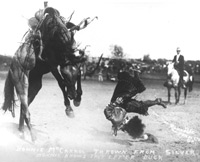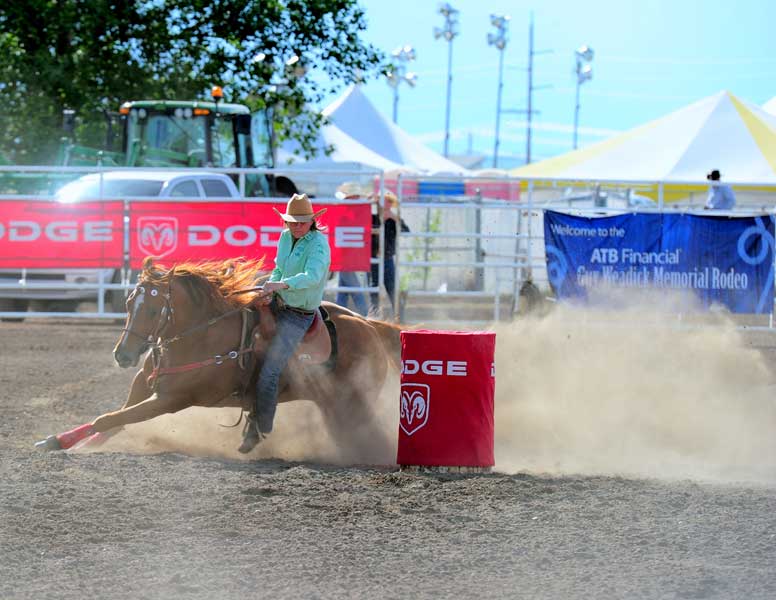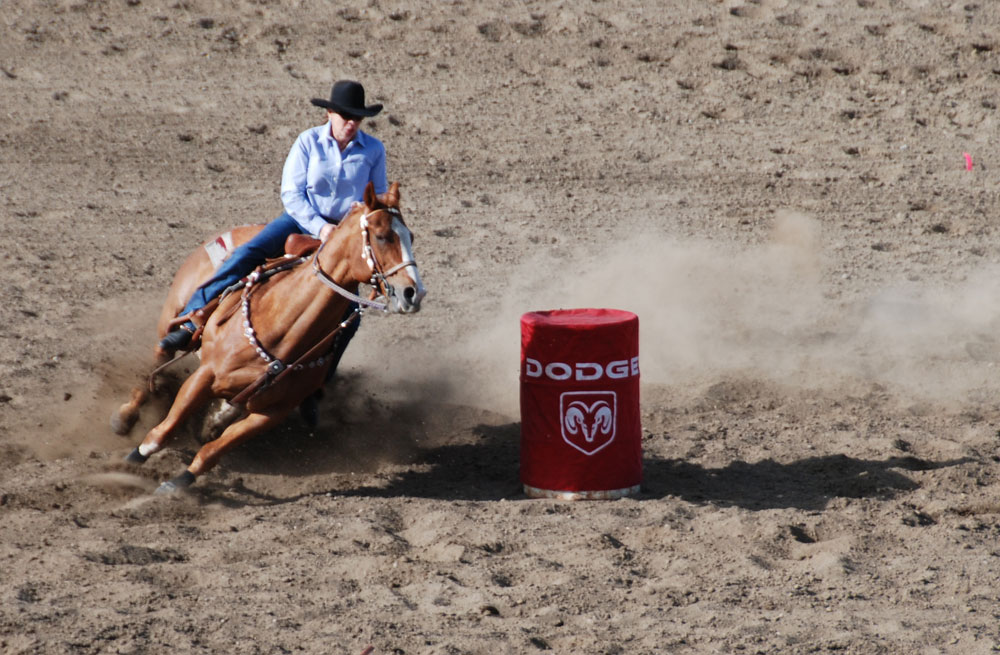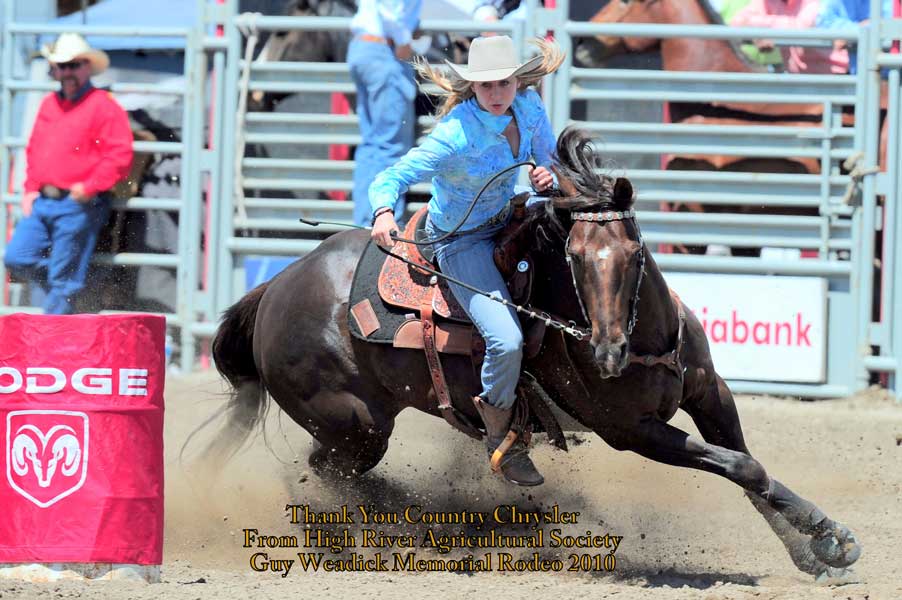
When rodeo first became an actively promoted sport, women rode broncs, bulls, threw ropes and men also barrel raced. Many historical organizations have worked to record these women and their achievements. Today at the CPRA or NFR rodeo level, women compete in barrel racing and do not ride broncs or bulls, nor throw ropes in competition against men. But don't go thinking there's no room in rodeo for women.

There are many rodeos sanctioned by the WPRA that ensure that women will continue to compete. Here in Canada, we have the CGRA working to that same end. The events are a little different from what one might expect, but the level of skill is no less.

Barrel racing remains the main women's event you will see at a rodeo. Often clad in flamboyant costume these girls maneuver their horse around three barrels in a complicated cloverleaf pattern. It's two rights and a left or two lefts and a right depending on the rider's preference. This preference is most often determined by the horse's strongest lead.

Hours of training, often years before a horse is ready to race means that this isn't something one does on a casual basis. Many of the riders do so full time, adding to their income by training horses or maintaining other full time jobs. Go women who multitask...

The sport is a fan favorite, generating much excitment as the announcer calls for the crowd to "bring her home". The dash from the top barrel to cross the finish line is done a full on gallop. Turning the barrels takes skill, expert horsemanship and full on trust between horse and rider. The object is to get as close to the barrel as possible without knocking it over, take the fewest strides possible between each barrel and complete the pattern in the least amount of time.
The barrels are set in a triangle at one end of the arena, leaving room for the racer to get up to speed before crossing the electronic eye to start the timing. It's over quick, with times running between 15-18 seconds, so don't look away.
